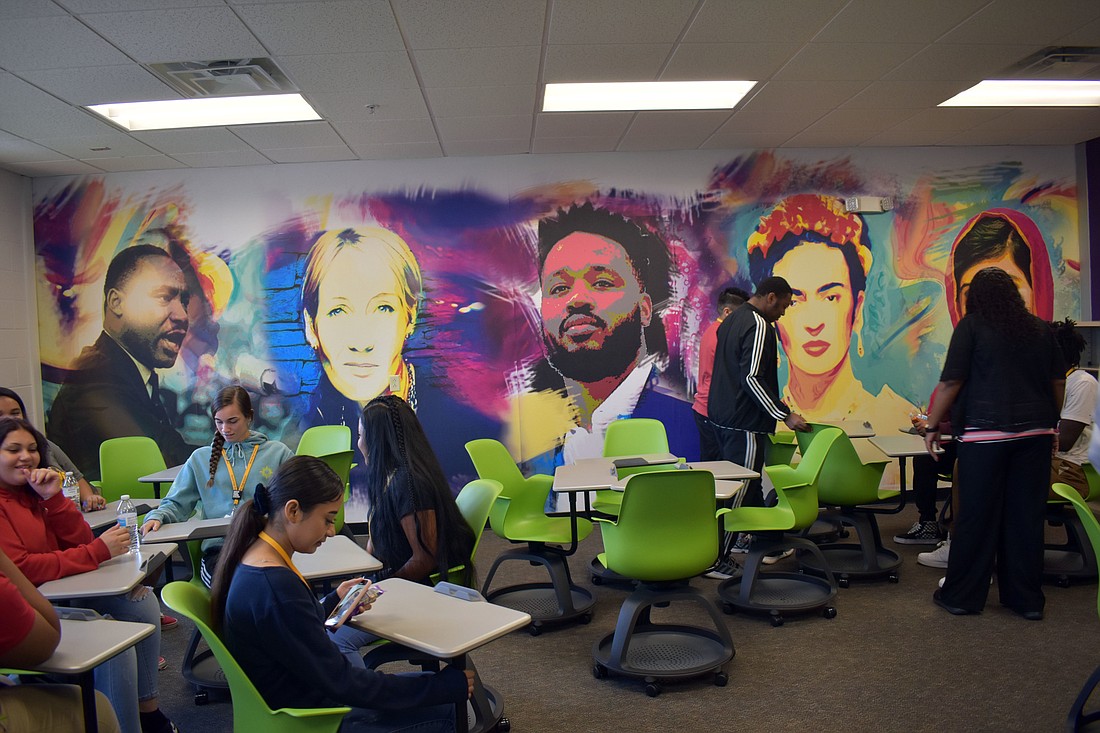- January 23, 2025
-
-
Loading

Loading

Not all students get as excited about reading a Charles Dickens novel as they do when Post Malone releases a new song, but with a new learning environment, some teachers are hoping to change that.
With a grant from the Gulf Coast Community Foundation and The Charles & Margery Barancik Foundation, three high schools — Booker, Venice and Riverview — received custom-designed classrooms to help students who struggle with reading and language arts.
The spaces, called intensive language arts classrooms, were designed by Ringling College of Art and Design students with input from each high school’s teachers and students.
Ringling students spent a few days interviewing high school students face to face and then sent out an online survey to gauge what the students would find most important in their ILA classroom. Then, each student came up with two to three designs that each school could choose from, said Barbara Marini, the head of Ringling’s interior design department.
Each school could have chosen its own design, though all three chose the same students’ design, which features bright green movable desks, dry-erase tablets that can be attached to the desks and a mural of historical figures, such as Martin Luther King Jr. and Frida Kahlo.
“This process was awesome because when people have control over their environment, they’re much more apt to be engaged in learning,” Marini said. “I’m looking forward to seeing some of the results of the learning in the next couple years to see if we made a difference.”
In the classroom, students can manipulate their desks into a variety of structures to enhance different learning activities. Students in the class are often identified by third or fourth grade to have some kind of literacy or testing issues.
The goal of the ILA classes is to help students boost their reading performance by working through test-taking strategies or test anxiety by using mindfulness strategies, such as different breathing techniques.
Additionally, students work through literature in an alternative way. For example, in Booker High ILA teacher Jasmine Persaud’s class, students are doing a segment called “Hip-Hop Literature,” where they read texts of interest from their favorite artists and learn how to break it down.
“I have students that struggle understanding poetry, and now they look back at a piece of poetry and say, ‘I can do this better now because I did a whole song versus one stanza,’” Persaud said.
Although the techniques are helpful, Persaud said she’s excited to be in the new room, which allows students with anxiety to swivel in their desks or move together to work collaboratively.
“I saw students walk in here and say, ‘I feel special,’” Persaud said. “That’s what that’s supposed to mean. We want them to feel special in a positive way.”
Throughout the year, students are given small incentives, such as candy bars and books. If students in the program pass their Florida State Assessments in English language arts as 10th grade students, they are given a laptop.
One such student was Booker High’s Kristian Jones-Davis, who said he now uses his laptop to work on online courses and study for quizzes and exams.
“It also helps me in other places of life, such as with my art,” he said. “Trying to create something from your mind is quite a hard task, but with the laptop I have, it isn’t so bad, and I can even ask other artists for help and tips.”
The other part of the grant helps recognize student success by paying bonuses and training teachers whose students show improvements.
“By incentivizing them, it helps kind of recruit teachers into those areas because it’s so hard to find teachers who want to work with reading,” Booker Assistant Principal Merlin Schenk said. “It really helps to show them that they’re important.”